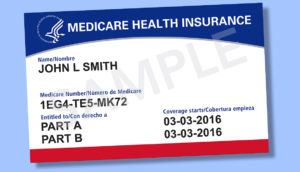 Today’s top story: Cash back, miles, or…wine? Credit card rewards are evolving. Also in the news: A new episode of the Smart Money podcast on why you should question your bills and how to make the most of a raise, Medicare’s telehealth experiment could be here to stay, and the best way to ask for a cost-of-living increase.
Today’s top story: Cash back, miles, or…wine? Credit card rewards are evolving. Also in the news: A new episode of the Smart Money podcast on why you should question your bills and how to make the most of a raise, Medicare’s telehealth experiment could be here to stay, and the best way to ask for a cost-of-living increase.
Cash Back, Miles or … Wine? Credit Card Rewards Are Evolving
If cash back and travel feel blah, a new crop of credit cards will reward you in different ways.
Smart Money Podcast: Why to Question Your Bills, and Making the Most of a Raise
Medicare’s Telehealth Experiment Could Be Here to Stay
An astronomical increase in telehealth visits by Medicare beneficiaries in 2020 could prompt a reshaping of post-pandemic rules.
The Best Way to Ask for a Cost-of-Living Raise
Inflation rates are the highest they’ve been in 30 years.
 Today’s top story: Medicare’s telehealth experiment could be here to stay. Also in the news: 4 best practices to simplify your small business, how Omicron could impact your travel, and 7 things to buy early this holiday season.
Today’s top story: Medicare’s telehealth experiment could be here to stay. Also in the news: 4 best practices to simplify your small business, how Omicron could impact your travel, and 7 things to buy early this holiday season.  Today’s top story: 4 reasons to shop Small Business Saturday. Also in the news: Substantial Medicare coverage for mammograms and breast cancer surgeries, therapies and prostheses, and PlayStation and Xbox consoles in short supply in 2021.
Today’s top story: 4 reasons to shop Small Business Saturday. Also in the news: Substantial Medicare coverage for mammograms and breast cancer surgeries, therapies and prostheses, and PlayStation and Xbox consoles in short supply in 2021. Today’s top story: Harsh vibe continues for home buyers in 2022. Also in the news: Important lessons from Mortgage application data, new for Medicare in 2022, 5 mistakes that can lead to a bad car loan, and TV Black Friday 2021 deals.
Today’s top story: Harsh vibe continues for home buyers in 2022. Also in the news: Important lessons from Mortgage application data, new for Medicare in 2022, 5 mistakes that can lead to a bad car loan, and TV Black Friday 2021 deals. Today’s top story: What you need to know about Medigap Plan C. Also in the news: 5 steps to weed out Instagram ad scams, and cell phone Black Friday 2021 deals.
Today’s top story: What you need to know about Medigap Plan C. Also in the news: 5 steps to weed out Instagram ad scams, and cell phone Black Friday 2021 deals. Today’s top story: Parents with student debt want a do-over. Also in the news: What you need to know about Medigap Plan G, don’t let Social Security steer you wrong, and why Millennials and Gen Zers should be investing in Roth IRAs.
Today’s top story: Parents with student debt want a do-over. Also in the news: What you need to know about Medigap Plan G, don’t let Social Security steer you wrong, and why Millennials and Gen Zers should be investing in Roth IRAs.